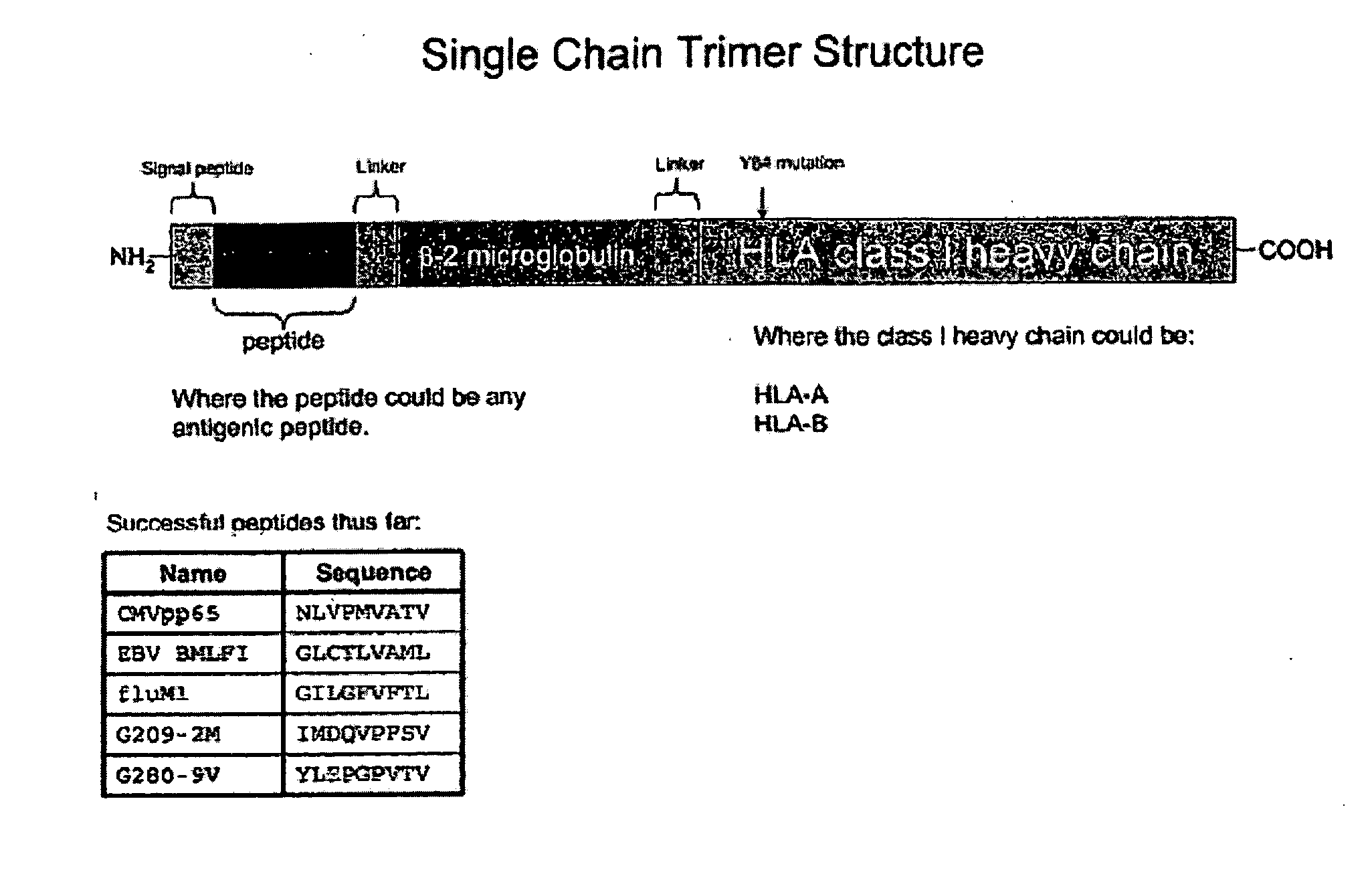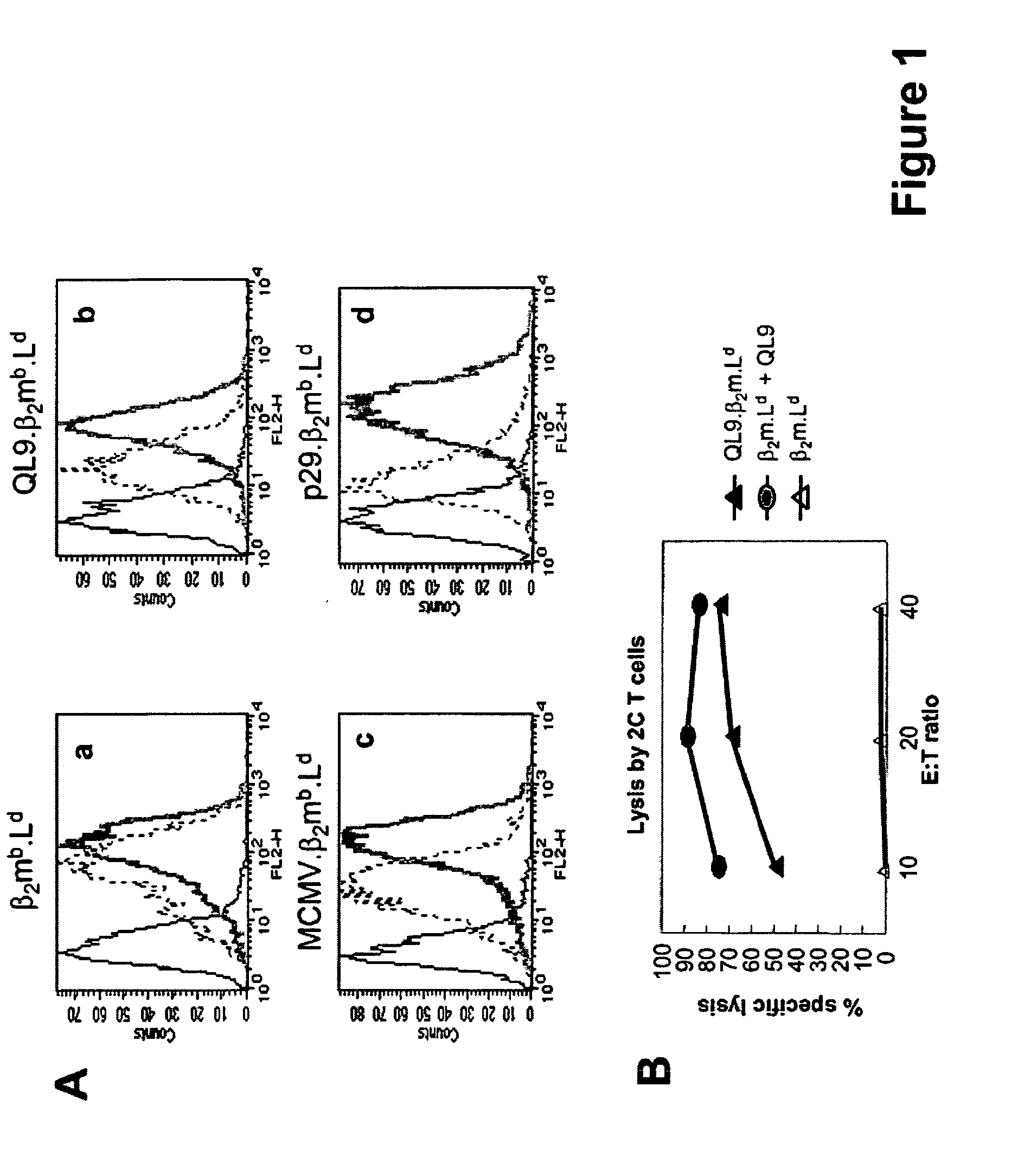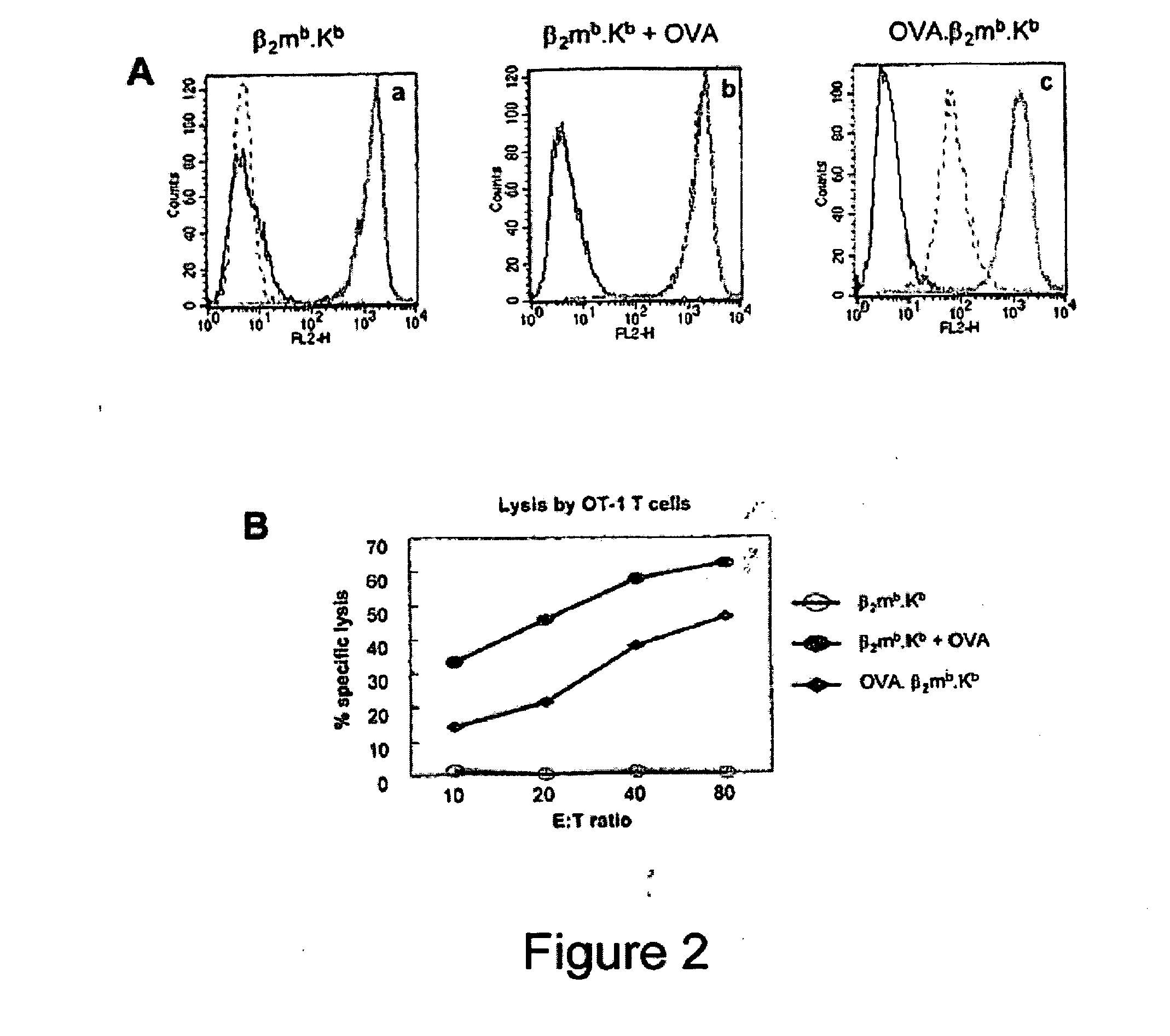Single chain trimers and uses therefor
a single chain and trimmer technology, applied in the field of single chain trimmers, can solve the problems of lack of enrichment of antigen-specific t cell responses, antigen peptides not stably binding to the heavy chain,
- Summary
- Abstract
- Description
- Claims
- Application Information
AI Technical Summary
Benefits of technology
Problems solved by technology
Method used
Image
Examples
example 1
[0082]This example, as illustrated in FIG. 8, provides a representative experiment in which CD8+ T cells from healthy human volunteer (11G38295) were activated with autologous dendritic cells pulsed with P495 peptide (SEQ ID NO: 1) and cultured for 14 days. At the start of culture, 4.6% CD8+ T cells were specific for P495 peptide antigen as assessed by tetramer statining. At day 14, the percentage increased to 61.1%. The CD8+ T cells were then washed and placed in culture with SCT transfectants (called C5-Gle299 cells) in the presence of interleukin-2 (IL-2). Fourteen days later (day 28 of culture), 96.3% of the cells were specific for P495 as assessed by tetramer analysis. The growth curve (11G38295 secondary stimulation) for this experiment is shown: CD8: T cells purified on a cell sorter (MoFlo, diamonds) compared to unpurified CD8+ cells (squares).
example 2
[0083]This example, as illustrated in FIG. 9, demonstrates that large numbers of functional antigen-specific human CD8+ T cells can be generated ex vivo using K562 cells expressing single chain HLA-A2 / CMV peptide / β-microglobulin trimer (K562-SCT). Fresh peripheral blood CD8+ T cells were first stimulated with autologous DC and pp65 peptide (NLVPMVATV) for 14 days (primary stimulation), harvested and stained using HLA-A2 / CMV pp65 tetramer. (A) For the secondary restimulation, CD8+ cells were purified by high speed sorting based on tetramer staining and re-stimulated for 14 days using the REM method (open circles) or alternatively, unsorted CD8+ T cells were re-stimulated for 14 days in the presence of K562-SCT (closed circles). A representative experiment shows CD8+ T cell growth (total cell number, mean of triplicate determinations) in a secondary 14 days culture period for each group; (B) Flow cytometry analysis of CD8+ T cells during the culture period. Percentages of HLA-A2-CMV p...
example 3
[0085]This example, as illustrated in FIG. 10, demonstrates retention of CD28 expression and display of a phenotype consistent with central memory, effector memory and effector T cell subsets in CD8+ T cells expanded with K562-SCT. K562-SCT expanded CD8+ T cells retain CD28 expression and display a phenotype consistent with central memory, effector memory and effector T cell subsets. CD8+ T cells were expanded using DC and peptide in primary stimulation for 14 days followed by K5652-SCT in secondary stimulation. On day 18 after the secondary stimulation, cells were harvested and stained using PE-conjugated HLA-A2 / CMV-pp65 tetramers (tet+) and FITC-conjugated anti-CD8, -CD45RA, -CD45RO, -CD28, —CD27, —CD62L, —CCR7 and —CD127 (IL-7Rα).
[0086]Adoptive transfer of tumor-specific CD8+ T cells in tumor-bearing mice has shown that terminally differentiated effector T cells are less potent at curing animals with advanced tumors (Gattinoni et al (2005) J. Clin. Invest. 115: 1616). Other publi...
PUM
| Property | Measurement | Unit |
|---|---|---|
| Fraction | aaaaa | aaaaa |
| Fraction | aaaaa | aaaaa |
| Time | aaaaa | aaaaa |
Abstract
Description
Claims
Application Information
 Login to View More
Login to View More - R&D
- Intellectual Property
- Life Sciences
- Materials
- Tech Scout
- Unparalleled Data Quality
- Higher Quality Content
- 60% Fewer Hallucinations
Browse by: Latest US Patents, China's latest patents, Technical Efficacy Thesaurus, Application Domain, Technology Topic, Popular Technical Reports.
© 2025 PatSnap. All rights reserved.Legal|Privacy policy|Modern Slavery Act Transparency Statement|Sitemap|About US| Contact US: help@patsnap.com



